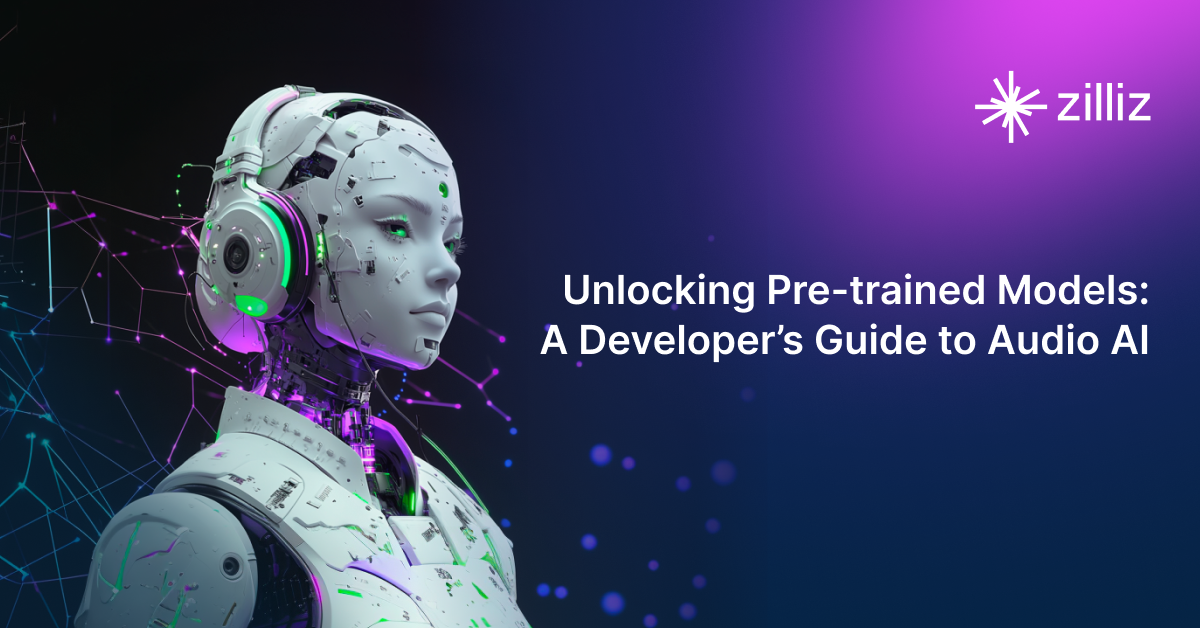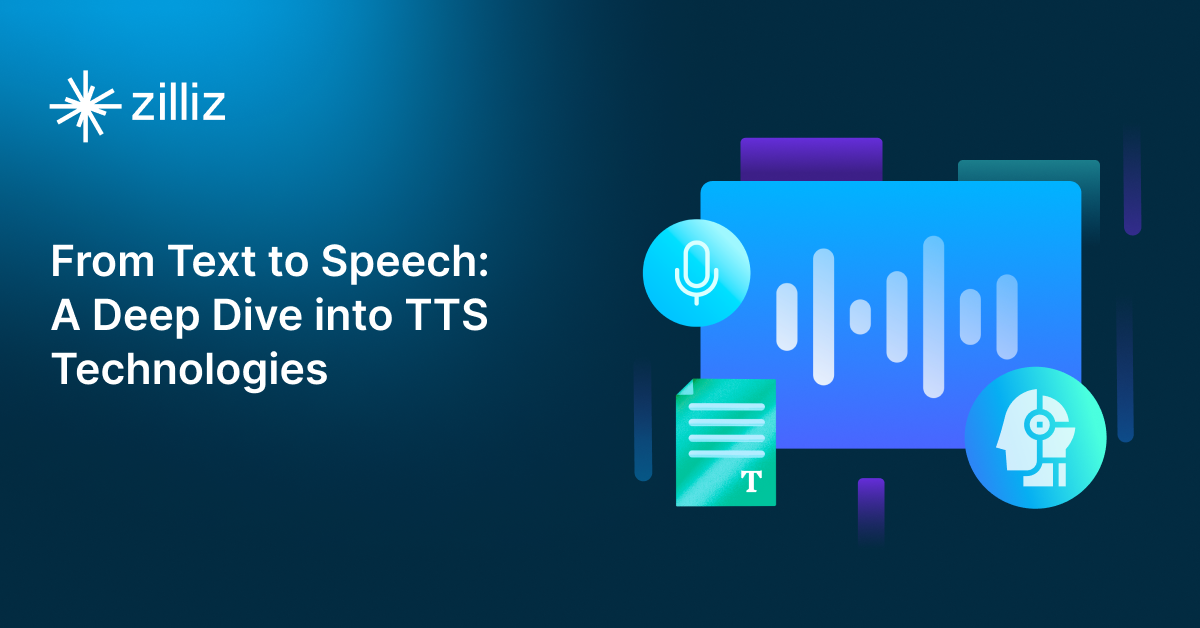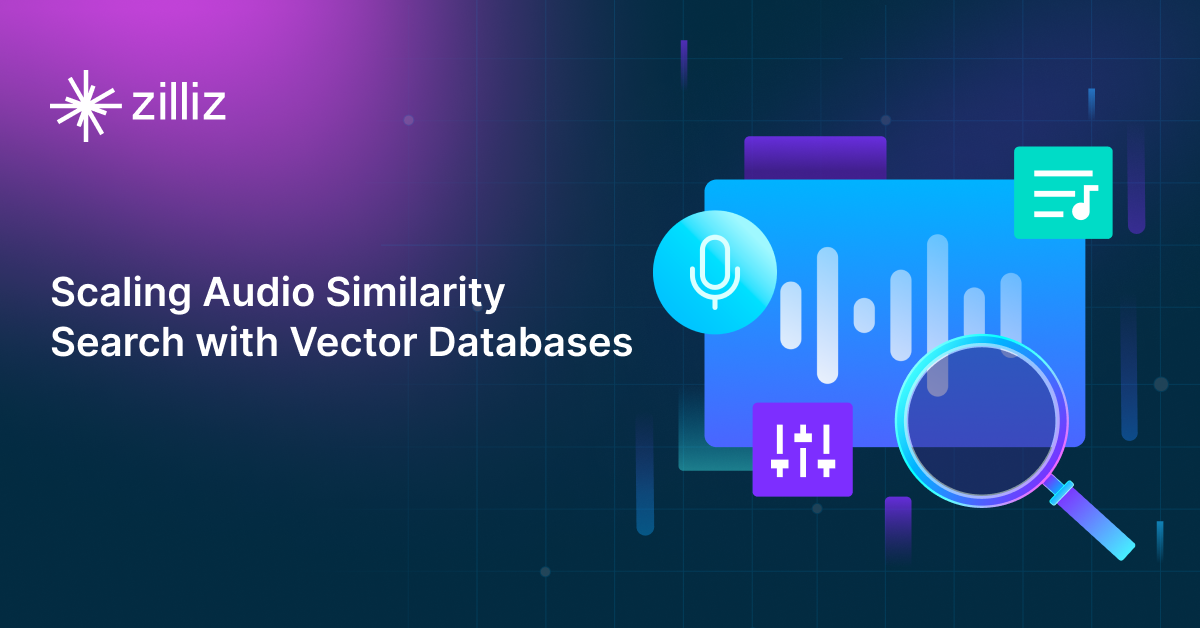Choosing the Right Audio Transformer: An In-depth Comparison
Discover how audio transformers enhance sound processing. Explore their principles, selection criteria, popular models, applications, and key challenges.
Read the entire series
- Top 10 Most Used Embedding Models for Audio Data
- Unlocking Pre-trained Models: A Developer’s Guide to Audio AI Tasks
- Choosing the Right Audio Transformer: An In-depth Comparison
- From Text to Speech: A Deep Dive into TTS Technologies
- Getting Started with Audio Data: Processing Techniques and Key Challenges
- Enhancing Multimodal AI: Bridging Audio, Text, and Vector Search
- Scaling Audio Similarity Search with Vector Databases
From real-time speech recognition in voice assistants to AI-generated music and noise suppression in teleconferencing, audio transformers are transforming how we process and interact with sound. It plays a key role in voice assistants, transcription services, and other real-world applications. With AI advancing rapidly, these technologies continue to enhance user experiences and improve accessibility.
Audio transformer models have emerged as powerful tools for handling complex audio tasks such as speech recognition, music generation, and sound classification. They play a crucial role in modern audio AI applications by enabling more accurate, efficient, and scalable solutions.
Choosing the right transformer model is crucial for achieving the best results. Some models excel at speech enhancement, while others are better suited for music composition or noise reduction. Understanding these differences helps developers integrate AI-powered audio solutions effectively.
This blog post is part of our series, A Developer’s Handbook to Mastering Audio AI. This post provides a comprehensive guide to audio transformers, explaining their working principles, comparing popular models, and offering insights into selecting the best transformers for different applications.
What are Audio Transformers?
Audio transformers are deep learning models designed for advanced audio processing. They use self-attention mechanisms to analyze entire audio sequences at once. This approach enables them to capture complex, long-range dependencies in data, effectively handling both local details and global patterns simultaneously.
Traditional models like Convolutional Neural Networks (CNNs) and Recurrent Neural Networks (RNNs) are effective at detecting local patterns. However, they often struggle with capturing global context and suffer from computational inefficiencies. The drawbacks, such as vanishing gradients and limited scalability, make real-time audio processing challenging and highlight the need for more robust solutions.
Audio transformers counter these limitations by processing audio sequences in parallel and efficiently capturing long-range dependencies. They maintain both fine-grained detail and overall context, which helps overcome the shortcomings of conventional models.
Here are the core principles behind audio transformer models:
- Self-Attention Mechanisms: Audio transformer models use self-attention mechanisms to assign different weights to parts of the audio input. This process captures intricate relationships and dependencies across the entire sequence. It works by comparing every audio frame to all others, identifying relevant connections, and refining focus based on context.
- Positional Encoding: Transformer models process entire sequences at once. Position encoding adds information about the sequence position of each audio segment to the embeddings. It ensures that the temporal structure of the audio signal remains intact.
- Multi-Head Attention: These models use multiple parallel self-attention "heads," each learning distinct focus patterns. For instance, one head might track pitch variations, while another detects rhythmic structures. This approach extracts diverse features and deepens the model’s understanding of complex audio signals.
- Parallel Processing: Instead of processing step by step, these models analyze entire sequences at once. This eliminates the delays common in traditional recurrent models and improves computational efficiency and scalability, making them ideal for real-time applications.
Architecture of an Audio Transformer
Key Factors in Choosing the Right Audio Transformer
Choosing the right audio transformer is crucial because it can significantly impact the performance and accuracy of your audio processing tasks. When selecting an audio transformer, consider the following key factors:
- Task-specific requirements: The model must be well-aligned with your application. For example, a transformer for speech synthesis should capture natural language nuances, while one for music generation must understand complex musical patterns.
- Model complexity: More complex models have a higher capacity to learn detailed features but demand more processing power and may slow inference. Balancing accuracy with computational efficiency is essential, especially for real-time applications. You need to select a transformer that delivers high performance and meets your hardware and speed requirements.
- Real-time processing: Low latency is critical for applications like live speech recognition or streaming services. The chosen transformer should deliver fast, continuous audio analysis without delays.
- Customizability: The ability to fine-tune an audio transformer is important for adapting it to specialized domains. Customizability allows you to adjust model parameters better to capture specific characteristics, such as dialect-specific speech patterns. Selecting a transformer that supports customization means you can fine-tune it to meet your unique requirements precisely.
- Data Quality and Availability: Some transformers demand massive labeled datasets, while others use self-supervised pre-training (e.g., contrastive learning on unlabeled audio). Align the model’s data hunger with your data availability.
- Integration and Deployment Considerations: Evaluate how easily the model integrates with your existing infrastructure. Consider factors like inference speed, memory footprint, and compatibility with available hardware and software.
Evaluating these factors can help you choose an audio transformer that meets the demands of your specific application and operates efficiently and effectively in your intended environment.
Popular Audio Transformer Models
Audio transformer models have gained prominence across various audio applications. This section explores some of the most well-known models and how they address specific audio-processing tasks. These models are broadly categorized into speech-related models, music generation models, and universal models for general audio tasks.
Speech-Related Models
Wav2Vec 2.0: Wav2Vec 2.0 is a ****pre-trained model specifically designed for speech recognition tasks. It uses unsupervised learning to capture the nuances of spoken language, improving transcription accuracy.
Wav2Vec2-Conformer: Conformer combines convolutional layers with transformer architecture to enhance speech recognition accuracy. Its hybrid design captures both local features and global context, making it particularly effective in challenging audio environments.
Whisper: Developed by OpenAI, Whisper is a robust, transformer‑based speech recognition model that excels in multilingual settings and noisy environments. Its minimalist pre‑processing pipeline allows it to perform tasks such as transcription, translation, and voice identification with minimal fine‑tuning.
VALL‑E: VALL‑E is a cutting‑edge, zero‑shot text‑to‑speech synthesis model. It can generate highly natural and expressive speech from just a few seconds of a target speaker’s voice, marking a significant advance in voice cloning and high‑quality text-to-speech synthesis (TTS).
Music Generation Models
Music Transformer: Music Transformer is a deep learning model built for generating and modeling music. It excels at capturing long-term dependencies within musical sequences. This allows it to create coherent and creative musical pieces.
Jukedeck: Jukedeck is a generative model for music that utilizes a hierarchical VQ‑VAE in conjunction with transformer‑based priors to generate raw audio music. Provided with genre, artist, and lyric, it can output a new music sample from scratch.
Universal Models for Audio Tasks
HuBERT: HuBERT is a robust pre-trained model for unsupervised speech representations. It captures the underlying structure of speech data. This versatility allows it to be fine-tuned for a range of audio applications.
Audio Spectrogram Transformers (AST): AST is designed for general-purpose audio classification. It uses transformer architectures to analyze spectrograms. Audio spectrogram transformers effectively classify diverse audio signals, making them suitable for a wide range of applications.
Comparison Criteria
When comparing audio transformer models, several key criteria help guide the selection process:
- Performance: This includes accuracy, naturalness, and overall output quality. High-performing models produce clear, precise, and natural-sounding results, crucial for tasks like speech recognition and music generation.
- Computational Efficiency: It considers memory usage, model size, inference time, and deployment ease. Efficient models use fewer resources and run faster, which is essential for real-time applications and resource-limited devices.
- Multimodal Capability: This measures the model’s ability to handle diverse audio types, including speech, music, and environmental sounds. A versatile model adapts well across different domains and tasks.
- Pre-training and Fine-tuning: The availability of pre-trained models and ease of fine-tuning are key. These models use large-scale data for strong initial representations, reducing training time and enabling task-specific customization.
- Community Support and Documentation: Strong community backing and clear documentation are vital. They ensure access to valuable resources, troubleshooting help, and ongoing updates supporting long-term success.
Real-World Applications of Audio Transformers
Here are a few real-world applications of audio transformers, showcasing their impact across multiple industries:
Speech Recognition and Synthesis
Virtual Assistants: Enhance voice interactions by enabling more accurate and natural conversational experiences.
Transcription Services: Improve the conversion of speech to text with precise and reliable transcription.
Speech Translation: Facilitate seamless translation between languages by effectively converting speech into text and back.
Music and Audio Creation
AI-assisted Music Composition: Enable the generation of original musical pieces using advanced AI techniques.
Music Style Transfer: Support modifying or blending different musical genres to create unique sounds.
Sound Effects Generation: Produce creative sound effects tailored to various media production needs.
Environmental Sound Classification
Security Applications: Identify and classify sounds to detect alarms, anomalies, and other critical signals in security systems.
Healthcare Monitoring: Process and analyze audio in healthcare settings to monitor patient conditions and environmental sounds.
Robotics: Aid in situational awareness by classifying ambient sounds enhancing the functionality of robotic systems.
Noise Reduction and Enhancement
Podcast Quality Improvement: Improve podcast audio quality by effectively reducing background noise.
Conference Call Clarity: Enhance speech clarity in conference calls for better communication.
Media Production Optimization: Optimize overall sound quality in media production, ensuring clear and crisp audio output.
Challenges in Audio Transformer Selection
Audio transformers only solve audio processing challenges if the right model is chosen. However, selecting the optimal transformer for your use case is rarely straightforward. While these models excel in theory, real-world deployment introduces hurdles that demand careful consideration. Below are key challenges developers face during selection and implementation.
- Model Scalability: Audio transformers often demand high computational resources to handle large, high-volume datasets (e.g., live speech or real-time music). Scaling up for enterprise use can strain infrastructure, though hybrid cloud-edge setups and quantization can help reduce the load.
- Adaptation to Domain-Specific Needs: General-purpose models struggle with niche domains like medical transcription or podcast acoustics. Fine-tuning requires scarce domain-specific data, risking over-specialization. Balancing specificity with generalization is a persistent hurdle.
- Ethical Considerations: Speech recognition systems underperform for non-native accents, while music generators may replicate cultural biases. Such flaws perpetuate inequities in user-facing applications.
- Technical Limitations in Low-Resource Environments: Complex transformer models can exceed the memory, latency, and energy budgets of edge devices like hearing aids. Adopting lightweight architectures and optimization tools (like TensorRT) is crucial for efficient deployment in such environments.
To overcome these challenges, developers must carefully evaluate the model’s strengths and weaknesses in their target domain.
Conclusion
Audio transformers have reshaped how machines process sound by allowing breakthroughs in speech recognition, music creation, and audio enhancement. Their true potential, however, lies in matching the right model to the task.
Developers must weigh factors like real-time performance for voice applications against the computational demands of high-fidelity music generation. Models such as Wav2Vec 2.0 or Music Transformer deliver exceptional results in their domains. However, their effectiveness depends on careful fine-tuning and domain-specific adjustments.
Challenges like adapting models to niche fields, mitigating biases in training data, and optimizing for low-power devices remain hurdles. Solutions include using modular frameworks for flexibility, diversifying datasets to ensure fairness, and adopting lightweight architectures for edge deployments. Staying updated on emerging tools and techniques will be vital as the field advances.
The future of audio AI relies on balancing innovation with practicality. Developers can ensure these technologies drive meaningful progress across industries by prioritizing ethical considerations and real-world usability.
Related Resources
- What are Audio Transformers?
- Key Factors in Choosing the Right Audio Transformer
- Popular Audio Transformer Models
- Comparison Criteria
- Real-World Applications of Audio Transformers
- Challenges in Audio Transformer Selection
- Conclusion
- Related Resources
Content
Start Free, Scale Easily
Try the fully-managed vector database built for your GenAI applications.
Try Zilliz Cloud for FreeKeep Reading

Unlocking Pre-trained Models: A Developer’s Guide to Audio AI Tasks
Learn how to implement pre-trained models for audio AI applications. Explore speech recognition, audio classification, and TTS with practical code examples.

From Text to Speech: A Deep Dive into TTS Technologies
Explore the evolution of Text-to-Speech technology from mechanical devices to neural networks. Learn how TTS works, compare popular models, and implement it using Google Cloud Platform.

Scaling Audio Similarity Search with Vector Databases
Discover how vector databases like Milvus and Zilliz Cloud enable efficient audio similarity search at scale, transforming music recommendations and audio retrieval applications.
